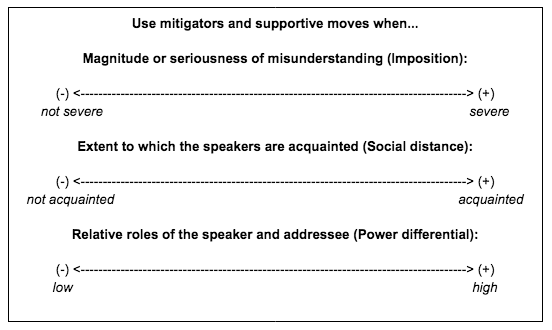| Body | By Aissa Canteras, CASLS Graduate Intern
This activity was designed for intermediate to advanced language learners. It was created to help learners explore and practice appropriate strategies that can be used in the target language to clarify information.
Learning outcomes:
Learners will be able to:
- Identify four strategies used to request for clarification in the target language (repeat, slow it down, rephrase, ask questions)
- Identify how these four strategies can be appropriately used in the target language given a particular context
- Demonstrate the ability to produce appropriate requests for clarification in the target language given a particular context
Mode(s): Interpersonal, Interpretive
Materials: Clarify! What To Do When You Aren’t Sure What’s Going On video, Clarifying Information activity sheets, video clips in the target language
Example video clips in English:
- Role Models Movie Clip: A Venti Coffee 0:00-0:10 https://www.youtube.com/watch?v=SSk0B0dVq4g
- Jennifer Lawrence Press Room Interview 1:11-1:47 and 3:32-3:58 https://www.youtube.com/watch?v=OYzVUt73u0E
- What’s Your Password? 0:34-1:00 https://www.youtube.com/watch?v=UzvPP6_LRHc
- Schitt’s Creek TV Clip: Is this a Write-off? 0:00-1:00 https://www.youtube.com/watch?v=aCP27_vquxQ
Procedure:
- During class, ask learners to think about conversations wherein they had a hard time understanding what was being said. Were there certain words or grammar that you did not understand? Was the communication style different to what you are accustomed to?
- Next, show learners the Clarify! What To Do When You Aren’t Sure What’s Going On video.
- Have learners identify the four strategies for clarifying information that were mentioned in the video (repeat, slow it down, rephrase, ask questions). Write them down on the board or a shared digital document so all can see. Then, ask learners to name how each strategy can help one understand more of what someone has said. Write down the “how’s” with each strategy.
- Show learners video clips in the target language where clarifying information took place. After each video, ask learners to identify the clarification strategy/strategies used.
- Distribute copies of the Activity Sheets. In groups, have learners transcribe the video clip then mark request mitigators (ex. I'm sorry, could you repeat what you said?, Can you explain that in more detail, please?) and supportive moves (ex. It’s loud here, could you repeat that?, I just want to be sure, but..) in the video transcripts.
- Next, have learners identify the magnitude or seriousness of the misunderstanding, the extent to which the speakers are acquainted, and the relative roles of the speaker and addressee of each transcript using the guide in the Activity Sheets.
- As a group, debrief the analysis of the learners. Ask learners to identify when request mitigators and supportive moves should be used. Summarize by writing them down on the board or on a shared digital screen. Below is an example:

- As a final activity, give learners mini-scenarios (see examples below) and ask them to share how they are going to clarify information based on the given scenario. Ask the learners why they used such language strategies.
Notes:
Examples of mini-scenarios (in English):
- Mini-scenario 1: Your friend is inviting you to a party this weekend. She gave the details of the party but you did not understand the street name of the address. How are you going to clarify the information?
- Mini-scenario 2: Your professor explained the tasks that you are supposed to complete in the next 30 minutes. You did not understand the last task. How are you going to clarify the information?
- Mini-scenario 3: You are in a Zoom class and you are taking notes of your group discussion. While taking notes, your groupmate’s connection becomes unstable and you lose track of what they are saying. How are you going to clarify the information?
This activity can be conducted in the target language, but educators are encouraged to allow for use of the L1 when it promotes the prolongation of deep cognitive engagement.
The activity can be modified to be more appropriate for novice learners by increasing scaffolds (e.g., the use of sentence stems and/or brainstorming key vocabulary “look fors” before beginning the activity), and focusing on the first two clarification strategies (repeat & slow it down) and at least two examples of request mitigators.
As an alternative, complete Part 1 of the Activity Sheet before class.
|
|---|

